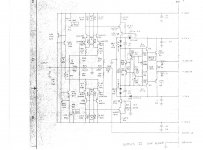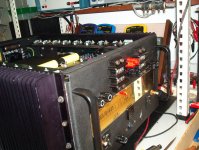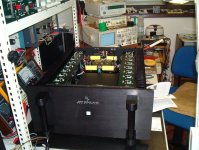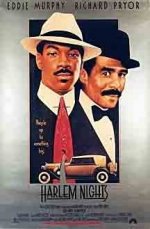Schematic Frontend Rowland model 7 Series II
I've just an Xeroxcopy of a Series II frontend at the time Rowland did not use the encapsulated versions.
Do not know if the zero-feedback claim has been made to this circuittopology.
But I guess things haven't change very much between the first and the fourth series (actually it is called the transimpedance version and not IV) just like the frontendboards of the different Stasis incarnations between 82 and 89.
I've just an Xeroxcopy of a Series II frontend at the time Rowland did not use the encapsulated versions.
Do not know if the zero-feedback claim has been made to this circuittopology.
But I guess things haven't change very much between the first and the fourth series (actually it is called the transimpedance version and not IV) just like the frontendboards of the different Stasis incarnations between 82 and 89.
Attachments
.......
Mirror, mirror on the wall is my amp the prettiest of them all?
Please Zen Mod share with us your opinion about this amp and tell us why a huge powersupply is neede to compensate the lack of feedback.
naah ... I prefer JH's version

huge PS is must for every decent amp
usual blahblah - entire active electronic isn't anything else than fancyshmancy variable resistor , placed between PSU and speaker
I don't have opinion about this amp ( just commented blahblah about same ) , because I never saw/heard one
edit :
tnx for schm
Last edited:
Just got TAS Vo. 10 Issue 40 featuring a full review of the Krell KMA Series IV and the Rowland Model 7 Series II at the mail.
On page 77 it is stated that: " ..., and the elimination of negative feedback, both overall and nested-loop."
So this claim of zero NFB is also made for the Series II schematic I supplied.
On page 77 it is stated that: " ..., and the elimination of negative feedback, both overall and nested-loop."
So this claim of zero NFB is also made for the Series II schematic I supplied.
that mechanism
My dois centavos (three actually):
1 is the high number of parallel devices to obtain plenty output current within the distortion limit (flat Hfe range of the output stage devices).
Biasing all of them properly translates to Class A operation up to 50W peak in 8 Ohm, and >200W continuous dissipation.
2 is the different distortion signature of such a design in comparison to regular NFB path power amps.
Most distortion of a power amp derives from the output stage.
The late production Model 7 was spec'd at 350W, while the rail voltages suggest it would be more in the order of 450.
A power amp with global or local NFB loops typically has a low thd level till the output voltage is in vicinity of the rail voltage.
In a power amp as the M7, the relationship between Ib/Ic/Vce plays havoc at high output current levels (without feedback to hit the base current supercharger).
To get a picture of what i mean, you'd have to look at Id/Vce graphs for different Ib currents.
3 Maybe still OK for a 8 Ohm load, but worsens with load impedance going down, aka high output current, much higher distortion levels.
To keep the Vce-reserve up, with low impedance loads, requires a transformer stiffy.
Hence the 2.4KVA transformer in the M7, adding up 1+2+3.
As the typical anabolic steroid i is what i are, it reminds me of collapsing torque in a combustion engine at higher revs.
The global NFB amp would be the equivalent of an engine with dual overhead camshafts to obtain higher output through enhanced torque at a higher rpm.
Would make the nested NFB one akin to a motor with continuous variable valve timing.
The Yank M7 engine gets round the torque gorge simply by adding cubic inches, just build a much bigger block.
(in that light, a Popa/Stuart amp contraption is equivalent to an F1 engine. Everything from racing gas/parts to multiple valves and variable timing, plus efficient enough to finish on half a tank, gorgeous. The fun starts when trying to sell that to a farmer, in need of something to pull his 12,000lbs trailer up hill, on a mud track
 )
)In my experience, most reviewers/writers for audio magazines may have an ear for sound, but are not the engineering types, often copy the brochure without a real idea of the meaning.
Few exceptions, e.g. Bernhard Fuß, who wrote/measured a while for Audio magazine in Germany, then became a pro audio designer.
Or fellow forum member Holger Barske (on top of that also able to hold his liquor, sitting on a couch at 5am, next to the Best of the Best of the Boozers)
Last edited:
My dois centavos (three actually):
1 is the high number of parallel devices to obtain plenty output current within the distortion limit (flat Hfe range of the output stage devices).
Hi Jacco ( unhapilly with the crisis and recession we need more than just "dois centavos"....
Yes, and the only way to put aside any output stage protection...
In Brian
In the pic you supply at post #19, we can clearly see that the encapsulated modules for Jeff Rowland Model 7 and Model 5 are the same.
The only change must be the output voltage rails, or/and, the number of output transistors...
You're very right there amigos ;-)
Railvoltage was 94 (due to the AC increase in Europe from 220 to 230) and now 87 Volts. I rewired the toroids for 240 Volts.
24 outputtransistors per channel.
Your amp looks very beautiful inside also...
Are the + and - 125 Volts amber monitoring leds with two parallel 100K resistors also out?
My dois centavos (three actually):
In my experience, most reviewers/writers for audio magazines may have an ear for sound, but are not the engineering types, often copy the brochure without a real idea of the meaning.
Few exceptions, e.g. Bernhard Fuß, who wrote/measured a while for Audio magazine in Germany, then became a pro audio designer.
Or fellow forum member Holger Barske (on top of that also able to hold his liquor, sitting on a couch at 5am, next to the Best of the Best of the Boozers)
Dear Jacco,
Thankyou very much for your elaborate and insightfull answer to my question.
I'm not an engineer or technician so I'm raelly pleased with the analogy you used to further illustrate your explanations.
To me your remarks are much worthier the two pennies.
Now that you mentioned Bernhard Fuß from Audio how about Peter Bengel who featured in ('Aus dem Meßlabor')? It was he that measured the Threshold SA/1 having a constant 40 Volt output from 16 to 2 Ohms.
Both the SA/1 and Rowland Model 7 were reference amps at that time.
Meu compatriota,
one of the reasons i liked Audio magazine, proper measurements.
Btw, in addition to Tube-Dude's post, the 2.4KVA size of the M7 transformer is not a coincidence.
The 12 pairs of power devices handle a max dissipation of 4800 Watts.
At operating die temperature, that drops by half, makes 2400 Watts.
Means the transformer can't deliver more continuous VA's than the output stage safely handles.
Doesn't mean it's totally fool proof, imo, but better safe than sorry with nothing else protecting the output.
+ the 2SD600/2SD555 were exceptional TO3s for that time
one of the reasons i liked Audio magazine, proper measurements.
Btw, in addition to Tube-Dude's post, the 2.4KVA size of the M7 transformer is not a coincidence.
The 12 pairs of power devices handle a max dissipation of 4800 Watts.
At operating die temperature, that drops by half, makes 2400 Watts.
Means the transformer can't deliver more continuous VA's than the output stage safely handles.
Doesn't mean it's totally fool proof, imo, but better safe than sorry with nothing else protecting the output.
+ the 2SD600/2SD555 were exceptional TO3s for that time
Last edited:
Your amp looks very beautiful inside also...
Are the + and - 125 Volts amber monitoring leds with two parallel 100K resistors also out?
The Jeff Rowland was not mine, I just fix it for a friend, so I can't check anymore, about the amber light implementation.
Yes, it was in very good shape. It have 8 pairs of output devices in each channel, the last one near the back of the amp was the driver, and runs hotter. Thats the reason you can see 9 pairs in each channel.
Just another angle...
Attachments
Last edited:
Meu compatriota,
one of the reasons i liked Audio magazine, proper measurements.
Btw, in addition to Tube-Dude's post, the 2.4KVA size of the M7 transformer is not a coincidence.
The 12 pairs of power devices handle a max dissipation of 4800 Watts.
At operating die temperature, that drops by half, makes 2400 Watts.
Means the transformer can't deliver more continuous VA's than the output stage safely handles.
Doesn't mean it's totally fool proof, imo, but better safe than sorry with nothing else protecting the output.
+ the 2SD600/2SD555 were exceptional TO3s for that time
Hi Jacco,
As Nelson Pass stated at the beginning of this thread where I was contemplating of buying a S/550e to replace my SA/1's:
More hardware wil have the nod..
How do you know all these specs by heart?
When we had a discussion about the Krell KMA-200's I once had and I declared it idled at 1150 Watts (brochure knowledge) you immediately replied that it had to be 580 Watts and proved that.
Nelson Pass deduced just by experience thta it would be highly unlikely for the KMA-200 to idle at that specification.
Only the Krell KRS-200 could handle such a enormous influx of AC power (1050 Watts) you replied.
The poweruptake of the M7's exhibits almost the same characteristic as my SA/1's. After powering up the powerintake rapidly rises to over 2 Amps and stayes there for a while (much longer then the SA/1 though) and then it gently slopes down in hours settling around about 1.7 amps.
I'm curious how this behaviour is governed?
I submitted a graph of a Threshold biassetting document just to illustrate that behaviour.
It's the second drawing.
Attachments
that's nature of temp compensation in bias circuit
Jacco knows those things because he's clever and passionate old Oraclefart
I bet he spent more time reading shiny papers than chasing skirts in his youth age

Now I see in the schematic I supplied that probably MJE 122 & 182 that are mounted on the heatsinks are the monitoring devices for the biascircuit feeding back current into it changing conducting values of Q3 and Q4 or something like that?
There should be a lot of skirts these days at the beaches he lives near to with this splendid weather... Lots of German skirts also...
Now I see in the schematic I supplied that probably MJE 122 & 182 that are mounted on the heatsinks are the monitoring devices for the biascircuit feeding back current into it changing conducting values of Q3 and Q4 or something like that?
.....
without checking exact numbers - mechanismus is of that nature
.....
There should be a lot of skirts these days at the beaches he lives near to with this splendid weather... Lots of German skirts also...

as in Harlem Nights - his panties are buried in backyard
Attachments
Can't leave them hanging around for the spouse...
as in Harlem Nights - his panties are buried in backyard
How do
I have a number and word thingus, the reason i babble words in a few dozen languages and pull part or old Philips catalogue numbers out of the funny hat.
Does require reading them a couple of times, i've been up close to the M7's several times in the '80s and went over feature articles of the amps with a magnafying glass more often.
As in, i have annual editions of every major audio magazine from the early '80s till end of the '90s, and Xerox'd articles of magazines printed before i got the itch.
German ones as Stereo, Audio, Stereoplay, HiFi vision
The French NRDS, l'Audiophile, less familiar ones, US mags as Audio, Audio Amateur etc., downloaded from the Pass Laboratories site within months when it became live, earliest printouts have turned yellow by now after +17years.
Musen to Jikken and others from Japan, me started to learn Japanese in the 1980s to read it.
Dutch works as Radio Bulletin with Menno van der Veen, all editions of Audio&Techniek, the 1st part with fellow TH Delft'r Peter van Willenswaard (fun to see him again at the ETF last november) and the 2nd attempt till JvdS stopped it alltogether.
And part catalogues and semiconductor databooks from RIFA, Philips, Siemens, Sanken, Toshiba.
What i couldn't buy, Xerox at the university library, borrow from a friend working at the national library, i stole.
You could say i'm a rather obsessive character (and an idiot)
Downside is that i recollect numbers from way back, telephone numbers from has been girlfriends, bank numbers of relatives who died a long time ago.
Worst are passwords, i keep mixing up old ones with the new.
Every time my banks force me to change passwords, my accounts are blocked for days a week later.
(the nudy beach strip overhere is my favorite place to hang it out
 , but on a yearly basis i spend more time at the Heesen yachts trial test dockage at Hellevoetsluis )
, but on a yearly basis i spend more time at the Heesen yachts trial test dockage at Hellevoetsluis )
Last edited:
Hi Jacco,
That's a impressive data-catalog you've managed to store cerabral.
I do not think your an idiot at all being that eloquent and possesing such an enormous general knowledge.
I'm the idiot with having only superficial cognition about electronincs forcing me to ask the obvious to you guys.
I like to read those subjective American magaziens like TAS and Stereophile for the entertainment especially when HP argues with Mark Levinson or Stan Klyne or the dry humour from J Gordon Holt.
Bought two Audio's for measurements and schematics from the Rowland M7 and the Levinson ML-3.
I also like German mags like Hifi Exklusiv and Das Ohr.
That's a impressive data-catalog you've managed to store cerabral.
I do not think your an idiot at all being that eloquent and possesing such an enormous general knowledge.
I'm the idiot with having only superficial cognition about electronincs forcing me to ask the obvious to you guys.
I like to read those subjective American magaziens like TAS and Stereophile for the entertainment especially when HP argues with Mark Levinson or Stan Klyne or the dry humour from J Gordon Holt.
Bought two Audio's for measurements and schematics from the Rowland M7 and the Levinson ML-3.
I also like German mags like Hifi Exklusiv and Das Ohr.
All things relative.
The guy who lured me into audio DIY is an electronics professional, in his '70s now.
We were a tag-team duo back in the '80s; at the A&T events, component shopping in Germany, visits to shows, high-end stores.
Also the one who introduced me to several audio pro's he was intimate with, e.g. Johan Ketelaar and Harry van Dalen, Mr Rhapsody and MoreMusic, the current Pass Labs importer.
At the time, he stated he was building his last amps, after that it would be listening to music only (live and at home).
In a couple of years from now i'll float on the Med, spend my days hitting on an old bag at the village bakery or sound, and this here place has seen the last of me.
The guy who lured me into audio DIY is an electronics professional, in his '70s now.
We were a tag-team duo back in the '80s; at the A&T events, component shopping in Germany, visits to shows, high-end stores.
Also the one who introduced me to several audio pro's he was intimate with, e.g. Johan Ketelaar and Harry van Dalen, Mr Rhapsody and MoreMusic, the current Pass Labs importer.
At the time, he stated he was building his last amps, after that it would be listening to music only (live and at home).
In a couple of years from now i'll float on the Med, spend my days hitting on an old bag at the village bakery or sound, and this here place has seen the last of me.

Last edited:
- Status
- This old topic is closed. If you want to reopen this topic, contact a moderator using the "Report Post" button.
- Home
- Amplifiers
- Pass Labs
- Threshold SA/4e vs SA/1



